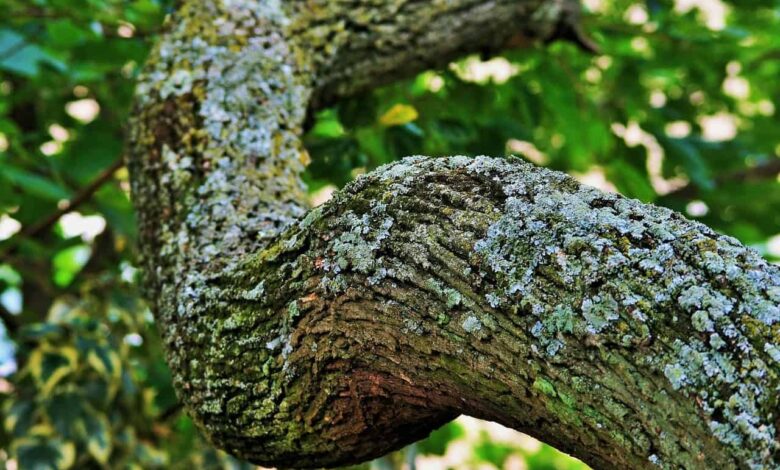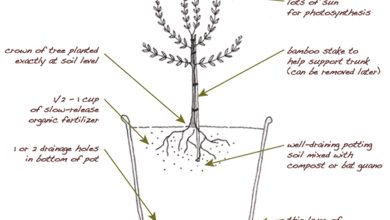Tipuana Tree: [Planting, Care, Irrigation, Pruning, Pests]

The Tipuana (also known as tipa, tipa blanca, tipuana palo rosa ) is a species of tree that produces small leaves, separated from each other and between which bright yellow flowers grow.
In some areas it is known as Tipuana Tipu or Palo Rosa and it is a very noble and common species in cold climates. It is also considered a fast growing tree , so you will be able to see the results in no time.
Would you like to have a beautiful and resistant tree in the garden? La Tipuana is an excellent option.
- When? In spring or summer.

- Where? On the outside , the full light of the sun, well drained, away from buildings.
- How do we prepare the land? With nutrients and plow before sowing.
- How should we water? By dripping .
- How often do you have to water? Once or twice a week, when you see the dry land.
- What pests and diseases does it have? Common insects and diseases of fungal origin.
Characteristics of the tipuana
 The Tipuana is a deciduous tree , which is capable of reaching up to 18 meters in height. Even so, its trunk is much thinner than others of similar species.
The Tipuana is a deciduous tree , which is capable of reaching up to 18 meters in height. Even so, its trunk is much thinner than others of similar species.
It works preferably in environments with hot climates with temperatures ranging from 14 to 18º C. However, it is capable of withstanding cold down to approximately -5º C at very specific moments.
The tree produces both flowers and fruits, the latter being responsible for providing the seeds for reproduction. It is important to know that although it produces flowers in abundance, they do not remain on the tree for long.
In addition, the fruits it generates are pod-shaped and have a single seed inside.
Among its main functions is the ornamental and protection against gusts of wind.
Where should we plant the tipuana tree?
 It needs plenty of sunlight , so it should be kept free of other tree species that can shade it.
It needs plenty of sunlight , so it should be kept free of other tree species that can shade it.
The roots are broad and strong, which makes it possible to recommend that the tree be located in an area away from buildings and other species .
Regarding the type of soil , it needs a good drainage and also an appropriate depth.
The favorite consistency is clay and it would even be able to live in those with a high level of salt in its structure.
When should the tipuana be grown?
All external transplanting processes must be carried out in the spring so that the species has the best conditions.
However, as the seed collection processes can be carried out in summer and take a month to germinate, they could also be sown in this season.
How do we prepare the land?
The Tipuana needs the land to be fertile and with nutrients , so if these conditions are not available, it is a good plan to work it before sowing.
In addition, a hole with good depth is needed so that the roots can spread comfortably.
The looseness of the soil is important, so if it is a little compact, with the step of the rake it will be more than enough.
How to plant tipuana step by step?
The sowing of the Tipuana can be carried out through the seeds or the cuttings .
Sowing by means of seeds
- The seeds are obtained in the summer period, being scattered by the wind.
- These will have to be left to dry very well for several days, without haste so that they do the process as it should be.
- After there, they will be buried in a peat and sand substrate in a seedbed that has good depth.
- It is important that the layer of substrate that is above the seeds is thin enough to facilitate access to the air.
- The process so that the seeds can germinate will last from 10 to 30 days , depending on the particular conditions they have.
- When the germination process has finished, it will be necessary to transplant to a more suitable place such as a pot.
- Now in the pot will keep the plant until it reaches a meter high and then moved to the garden.
- The hole where the base of the plant is to be inserted has to be a little deeper than the roots need to ensure that it is well established.
- The transplant will be carried out with the ball of earth that comes from the pot, covering with whatever is necessary so that the roots are not exposed.
- Afterwards, it will be necessary to moisten the entire area and cover with a layer of mulch so that the plant can take better advantage of all the moisture.
Sowing through cuttings
 There are some varieties of Tipuana that accept planting by cuttings, which must be taken from the mother plant during the fall .
There are some varieties of Tipuana that accept planting by cuttings, which must be taken from the mother plant during the fall .
These cuttings will be kept in a pot with universal peat to facilitate rooting.
Due to the date they are extracted from the plant, it will be necessary to keep them inside the house protected from frost.
What care does the tipuana need?
Irrigation
Irrigation will be essential to keep it in good quantity during the first months , when the plant is still young. Afterwards, you only need to moisten the soil when it is dry, probably once or twice a week.
The soil and the substrate
The Tipuana works according to a process of symbiosis with some bacteria that are present on the earth.
These bacteria provide the species with atmospheric nitrogen that is fixed through the roots and fill the plant with nutrients.
For this reason, fertilization processes are not essential as they do in other classes of species.
Pruning
As for pruning, this will be essential as the plant grows to give it a better shape.
What pests and diseases does the tipuana have?
The most persistent pests are common insects when fruiting time has not yet arrived. All of them are possible to combat with the use of commercially available insecticides.
In the case of fungal diseases, they can penetrate through wounds caused after pruning.
For this reason, it is essential to keep all the tools used in perfect condition and well clean.
The Tipuana is a very representative tree with excellent characteristics to promote planting in any area.




